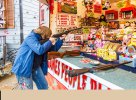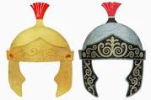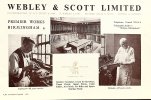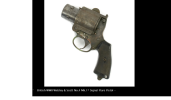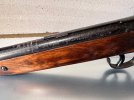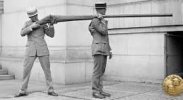-
Welcome to this forum . We are a worldwide group with a common interest in Birmingham and its history. While here, please follow a few simple rules. We ask that you respect other members, thank those who have helped you and please keep your contributions on-topic with the thread.
We do hope you enjoy your visit. BHF Admin Team -
HI folks the server that hosts the site completely died including the Hdd's and backups.
Luckily i create an offsite backup once a week! this has now been restored so we have lost a few days posts.
im still fixing things at the moment so bear with me and im still working on all images 90% are fine the others im working on now
we are now using a backup solution
You are using an out of date browser. It may not display this or other websites correctly.
You should upgrade or use an alternative browser.
You should upgrade or use an alternative browser.
mw0njm.
A Brummie Dude
NOTSHARP
master brummie
These are some of the Webley products, on offer in a Parker Hale catalogue from 1956.


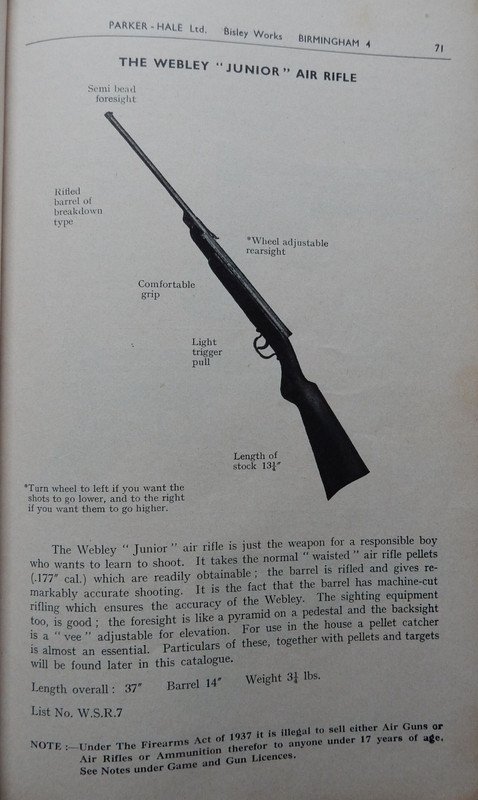






The 1956 price list in the back of the catalogue is enough to make one weep, until remembering what the average wage was likely to be.
"an average salary at the time in 1956 was just £478, which comes to around £11,325 currently"
Steve.









The 1956 price list in the back of the catalogue is enough to make one weep, until remembering what the average wage was likely to be.
"an average salary at the time in 1956 was just £478, which comes to around £11,325 currently"
Steve.
mw0njm.
A Brummie Dude
The British Bull Dog was a popular type of solid-frame pocket revolver introduced by Philip Webley & Son of Birmingham, England, in 1872, and subsequently copied by gunmakers in continental Europe and the United States. It featured a 2.5-inch (64 mm) barrel and was chambered for .442 Webley or .450 Adams cartridges, with a five-round cylinder. Webley produced smaller scaled .320 Revolver and .380 calibre versions later, butdid not mark them with the British Bull Dog name
The Bulldog was popular in Britain and America. US Army general, George Armstrong Custer, was said to have carried a pair at the Battle of the Little Bighorn. British Bull Dog revolvers were issued to employees of the Southern Pacific Railroad Company until 1895
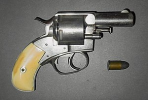
From Wikipedia
The Bulldog was popular in Britain and America. US Army general, George Armstrong Custer, was said to have carried a pair at the Battle of the Little Bighorn. British Bull Dog revolvers were issued to employees of the Southern Pacific Railroad Company until 1895

From Wikipedia
Richard Dye
master brummie
That is a good-looking revolver!The British Bull Dog was a popular type of solid-frame pocket revolver introduced by Philip Webley & Son of Birmingham, England, in 1872, and subsequently copied by gunmakers in continental Europe and the United States. It featured a 2.5-inch (64 mm) barrel and was chambered for .442 Webley or .450 Adams cartridges, with a five-round cylinder. Webley produced smaller scaled .320 Revolver and .380 calibre versions later, butdid not mark them with the British Bull Dog name
The Bulldog was popular in Britain and America. US Army general, George Armstrong Custer, was said to have carried a pair at the Battle of the Little Bighorn. British Bull Dog revolvers were issued to employees of the Southern Pacific Railroad Company until 1895
View attachment 181239
From Wikipedia
mw0njm.
A Brummie Dude
Webley & Scott Field Cannon

Webley & Scott Field Cannon barrel is made from forged alloy steel bar and has a 50mm smooth bore which allows it to be held on a UK Shotgun Certificate. The breech uses an interrupted thread system, the same as the original, which locks and unlocks by rotating only 60 degrees. As the breech rotates to unlock, it also automatically cocks the firing mechanism. Once loaded, the Webley & Scott Field Cannon, proved by The Birmingham Proof House for 2lb of shot driven by 1/4lb of black powder, is fired by lanyard. The Field Cannon’s carriage is a steel plate fabrication using traditional hot closed steel rivets. The wheels are crafted using English oak and ash and were made by Mike Rowland from Devon, Wheelwright to Queen Elizabeth II.
i would like one on my sgcAt a guide price of £25,000 plus VAT, the Webley & Scott Classic 12-pound Field Cannon is manufactured in the UK
View attachment 186980
Richard Dye
master brummie
Interesting that it qualifies for a shot gun certificate.Webley & Scott Field Cannon
View attachment 186981
Webley & Scott Field Cannon barrel is made from forged alloy steel bar and has a 50mm smooth bore which allows it to be held on a UK Shotgun Certificate. The breech uses an interrupted thread system, the same as the original, which locks and unlocks by rotating only 60 degrees. As the breech rotates to unlock, it also automatically cocks the firing mechanism. Once loaded, the Webley & Scott Field Cannon, proved by The Birmingham Proof House for 2lb of shot driven by 1/4lb of black powder, is fired by lanyard. The Field Cannon’s carriage is a steel plate fabrication using traditional hot closed steel rivets. The wheels are crafted using English oak and ash and were made by Mike Rowland from Devon, Wheelwright to Queen Elizabeth II.
i would like one on my sgc
At a guide price of £25,000 plus VAT, the Webley & Scott Classic 12-pound Field Cannon is manufactured in the UK
View attachment 186980
mw0njm.
A Brummie Dude
it is Built to address the growing re-enactment market,
the Webley & Scott Field Cannon is a scaled down version of the Classic Quick Firing 12-pounder Field Cannon. The Quick Firing 12-pounder gun was a common 3-inch (76 mm) calibre naval gun brought into British service in 1894 where it remained in active use until at least 1945. While being a common gun, its place in British Military history was immortalised through use during the Boer War where Naval guns were taken ashore, fitted with makeshift carriages and sent to assist the Army. The Boer War events were commemorated every year at the Royal Tournament Gun Run until the late 1990’s.
mw0njm.
A Brummie Dude
i dont think they would like it it you turned up for clay pigeon shooting with itInteresting that it qualifies for a shot gun certificate.
Enel
master brummie
I still have my Webley ‘Jaguar’ air rifle - a birthday present from 1964. This was a junior weapon, and came with a bottle of oil, pellets, and a target holder with paper targets. It’s definitely a budget rifle, not particularly accurate but gave my brother and me hours of fun ‘plinking’ tin cans in the garden. I would imagine that this sort of activity, would nowadays result in a knock on the door from the local constabulary (or worse), but felt pretty harmless then. Our yard had an end terrace wall at the bottom end, and a wall along one side and so formed a natural shooting gallery.
Attachments
Stokkie
master brummie
50 mm smooth bore. Proofed at Birmingham. I missed that in the original post - sorry. I had difficulty in imagining from the photo exactly how big this pocket cannon is!Interesting that it qualifies for a shot gun certificate.
mw0njm.
A Brummie Dude
not necessarily if the projectiles don't leave your gardenI still have my Webley ‘Jaguar’ air rifle - a birthday present from 1964. This was a junior weapon, and came with a bottle of oil, pellets, and a target holder with paper targets. It’s definitely a budget rifle, not particularly accurate but gave my brother and me hours of fun ‘plinking’ tin cans in the garden. I would imagine that this sort of activity, would nowadays result in a knock on the door from the local constabulary (or worse), but felt pretty harmless then. Our yard had an end terrace wall at the bottom end, and a wall along one side and so formed a natural shooting gallery.
mw0njm.
A Brummie Dude
Shotguns (Section 2 Firearms under the 1968 Act as amended) are defined in UK law as smoothbore firearms with barrels not shorter than 24 inches (61 cm) and a bore not larger than 2 inches (5.1 cm) in diameter, no revolving cylinder, and either no magazine or a non-detachable magazine that is not capable of holding more than two cartridges, plus one in the chamber;
Richard Dye
master brummie
Yes, just shy of 2”!50 mm smooth bore. Proofed at Birmingham. I missed that in the original post - sorry. I had difficulty in imagining from the photo exactly how big this pocket cannon is!
Richard Dye
master brummie
Imagine one of those with one in the chamber and two in a magazine, would be a shot gun monsterShotguns (Section 2 Firearms under the 1968 Act as amended) are defined in UK law as smoothbore firearms with barrels not shorter than 24 inches (61 cm) and a bore not larger than 2 inches (5.1 cm) in diameter, no revolving cylinder, and either no magazine or a non-detachable magazine that is not capable of holding more than two cartridges, plus one in the chamber;
I recall seeing a monster of a shotgun mounted on the front of a punt. I think the idea was to sneak up slowly and low to the waterbirds them blast the lot of them with one shot.Imagine one of those with one in the chamber and two in a magazine, would be a shot gun monster
mw0njm.
A Brummie Dude
 i fired a punt gun The guns were sufficiently powerful, and the punts sufficiently small, that firing the gun often propelled the punt backwards several inches or more Punt guns were usually custom-designed and varied widely, but could have bore diameters exceeding 2 inches (51 mm) and fire over a pound (≈ 0.45 kg) of shot at a time
i fired a punt gun The guns were sufficiently powerful, and the punts sufficiently small, that firing the gun often propelled the punt backwards several inches or more Punt guns were usually custom-designed and varied widely, but could have bore diameters exceeding 2 inches (51 mm) and fire over a pound (≈ 0.45 kg) of shot at a time Size comparison of a man and punt gun
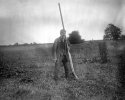
Richard Dye
master brummie
Did it work?I recall seeing a monster of a shotgun mounted on the front of a punt. I think the idea was to sneak up slowly and low to the waterbirds them blast the lot of them with one shot.
Richard Dye
master brummie
I’m sure but did it catch any birds?It certainly went off with one hell of a bang

